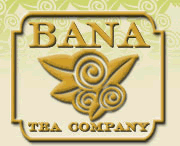
Determining the quality of Pu-erh tea requires some basic knowledge and experience. The quality of Pu-erh tea is based on a number of factors: area of production, leaf source, the grade of the leaves, methods of cultivation, the time of year it is harvested and the conditions under which it is stored.
Area of production:
Good quality Pu-erh tea comes from the four major Pu-erh producing regions in Yunnan, namely Simao, Xishuangbanna, Boshan, and Lincang. There are 10 famous tea mountains, six of them located within Xishuangbanna. Some of the most famous tea mountains today are: Yiwu, Jingmai, Nannuo, Yibang, Banzhang, and Yibang.
Leaf source:
Pu-erh teas can be made from leaves harvested from old arbor tea trees (qiao mu), sustainable farming small trees (Shengtai), tea bushes (guan mu) or wild tea trees (Yehsheng). The best leaf source is from the old arbor tea trees, followed by the wild trees, sustainable farming small trees and lastly tea bushes.
The old-growth arbor trees are the most genetically diverse as they are planted by seeds rather than by cloning. Consequently, teas made from these trees are richer, more complex, and offer good cha chi (positive energy) as compared to the clonal variety. Furthermore, the old arbor trees have been thriving on their own without human intervention for centuries, never requiring fertilizers or pesticides. Selena Ahmed, Ph.D., discovered in her research that leaves from the old arbor trees possessed the most anti-oxidants. She theorized that the old tea trees have to work harder to fend off pests and other herbivores and develops these compounds in response. To view Dr. Ahmed’s study, please see http://onlinelibrary.wiley.com/doi/10.1111/j.1755-263X.2012.00269.x/abstract
The demand for tea made from old trees is high but the yield of old tea trees is small. To meet the high demand, tea manufacturers sometimes mix the leaves from old trees with the leaves from tea bushes and pass them off as old tree teas. The ability to distinguish characteristics of different leaf sources is crucial to avoid being cheated. For information on how to tell if the tea is from the old trees or not, please click here: "Is it from the old trees of not?"
This is not to imply that all Pu-erh tea made from the bushes are inferior teas. However, teas made from bushes do not call for the high prices as do teas made from the old trees. Therefore, knowing the above-described characteristics will hopefully enable consumers to avoid over-paying for their tea purchases.
Season of harvest:
Pu-erh is harvested during spring, summer and autumn. New buds break in late March before the first rain. The first spring harvest is called Ming Qian Tea, referring to teas harvested before the Chinese Qing Ming Festival. Ming Qian Tea is considered the finest and most prized crop of the year’s production. The leaves are then picked two more times before the monsoon season. Leaves harvested in autumn are generally second to the spring harvest but superior to the summer harvest in quality.
Grades:
Pu-erh can be categorized into ten grades, from one to ten. The grades are determined by the time of harvest, the amount of buds, freshness of the leaves. The lower numbers represent young leaves closer to the bud and the high numbers represent older leaves farther down the branch. A bud and two leaves are considered the most desirable combination. Many tea cakes feature a blend of several grades to attain a desired flavor. This blending is usually disclosed by the tea producer. In other cases, there may be less benign reasons for producers to blend several grades of tea together.
Storage Conditions:
The aging of Pu-erh tea requires proper temperature and certain amount of humidity. However, a storage environment that has excessive heat and humidity often adversely affects the quality of the tea. Properly stored Pu-erh tea should be fragrant, pure and smooth, and offer long lasting after-taste that coats the mouth and throat. Improperly stored teas often lack character, and some even have a sharp unpleasant smell.
Judging the leaf source of Pu-erh tea requires experience and a determination often may not be conclusive. As indicated earlier, many teas that claim to be from ancient trees are mixed with leaves from bushes. Teas made from truly ancient trees are hard to come by and require a trusted producer to employ very strict quality control in their production.

